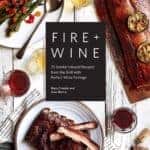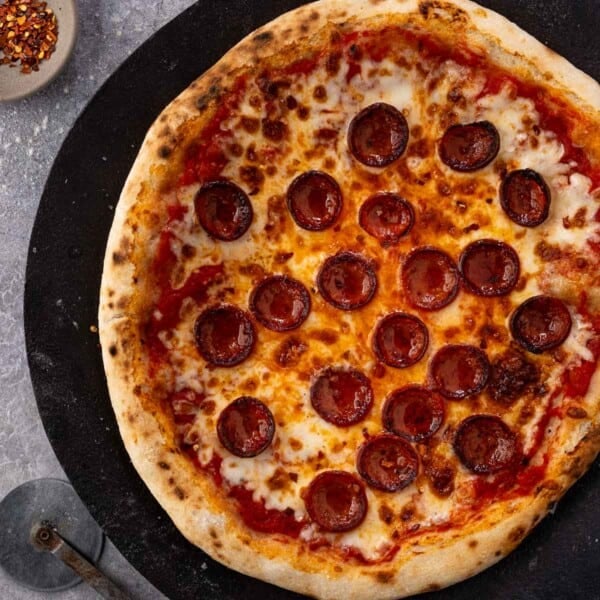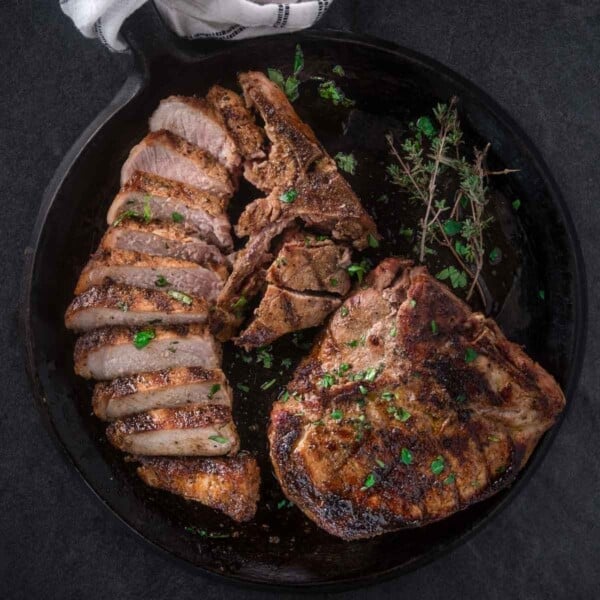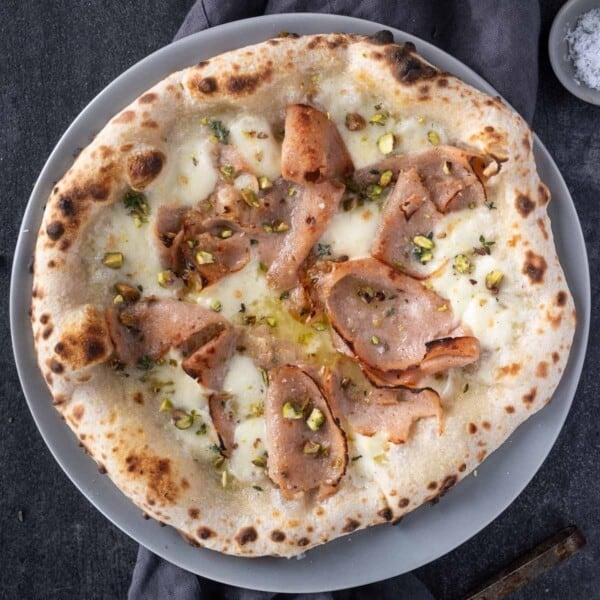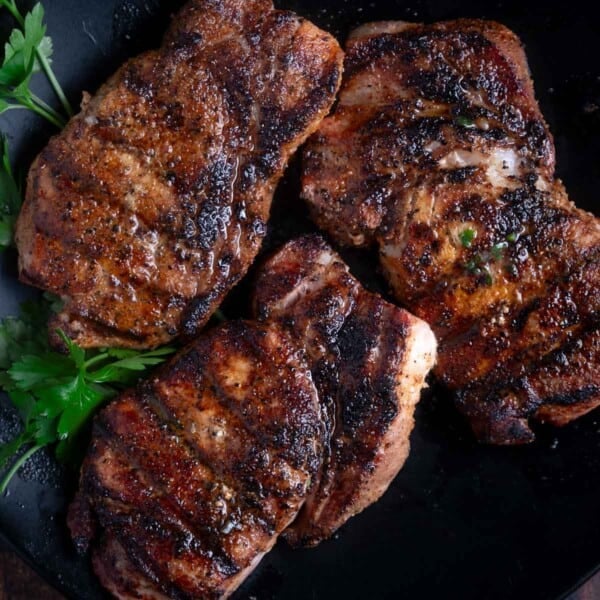What Are Pork Chops?
Jan 25, 2024, Updated Mar 11, 2024
This post may contain affiliate links. Read more at our disclosure policy.
If you’re a meat enthusiast, there’s no doubt that pork chops have graced your plate at some point. But what exactly are pork chops, what part of the pig do they come from, and what makes them so irresistible? In this guide, we’ll dive into the world of pork chops, exploring the various cuts, cooking techniques, and flavor profiles that make them a delicious staple in kitchens worldwide.
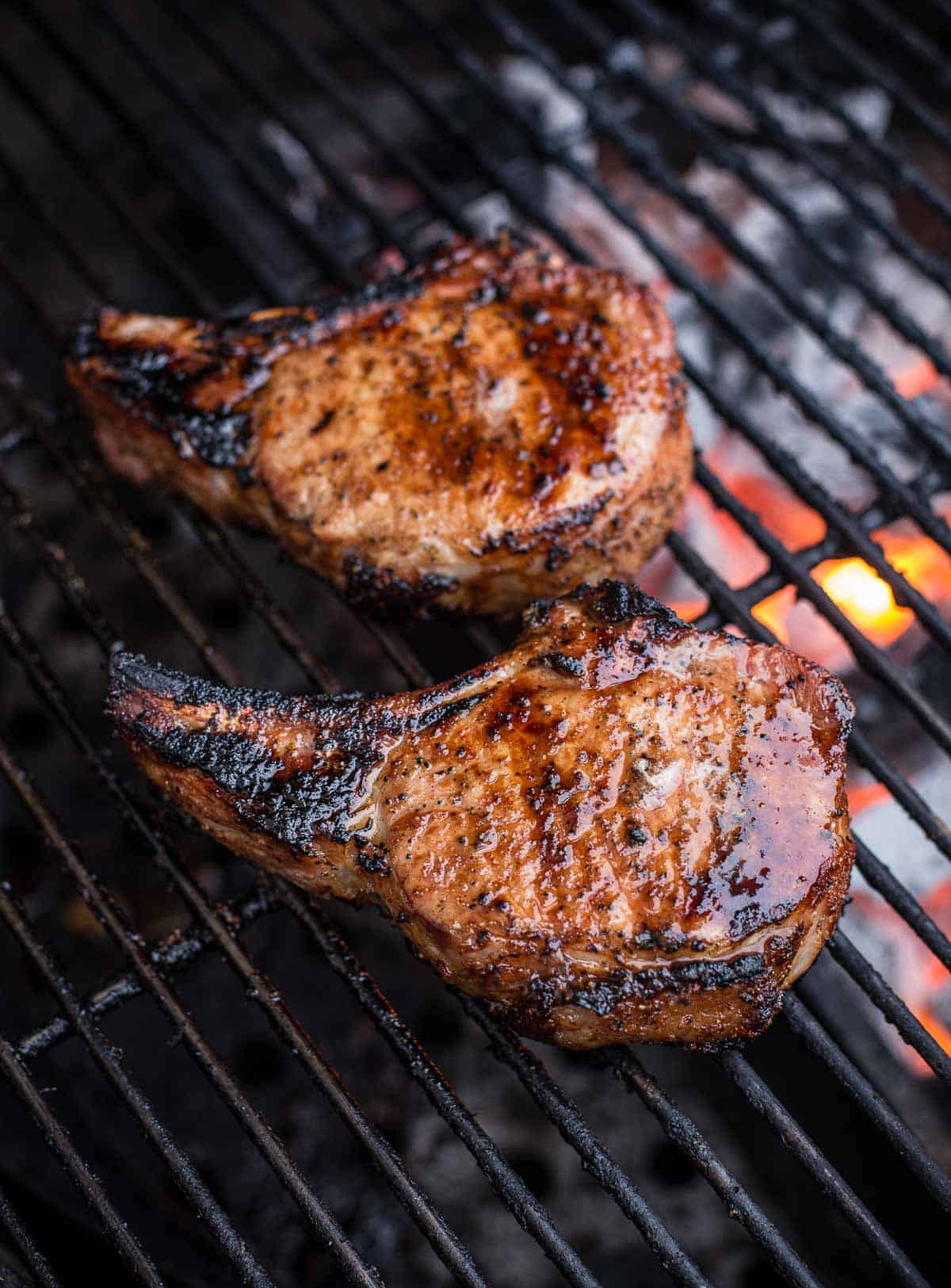
Table of Contents
The Basics of Pork Chops
Pork chops, or pork steaks, are prized for their tender, juicy meat, and rich flavor. They are typically cut from the loin of the pig, offering a balance of lean meat and decadent marbling. A full pork loin is a big cut, anywhere from 12 – 18 pounds, so there are a lot of various chops you can create from this pork primal cut.
The loin runs from the pork shoulder all the way along the spine and ends at the ham or pork sirloin. The further toward the ham you get the more bone there is. Each of those cuts come with their own characteristics and flavor profiles.
When ordering a pork chop at the butcher counter you may not see signage that specifies which type of pork chop is being sold. The details below will highlight the various cuts and the flavor profiles to expect.
Bone-In vs. Boneless
Pork chops come both bone-in and boneless. Bone-in chops have an added layer of flavor due to the bone marrow and fat that surrounds the bone, while boneless chops offer convenience and ease of cooking. The choice between the two often depends on your preferred cooking method and personal taste, or what the butcher has available.
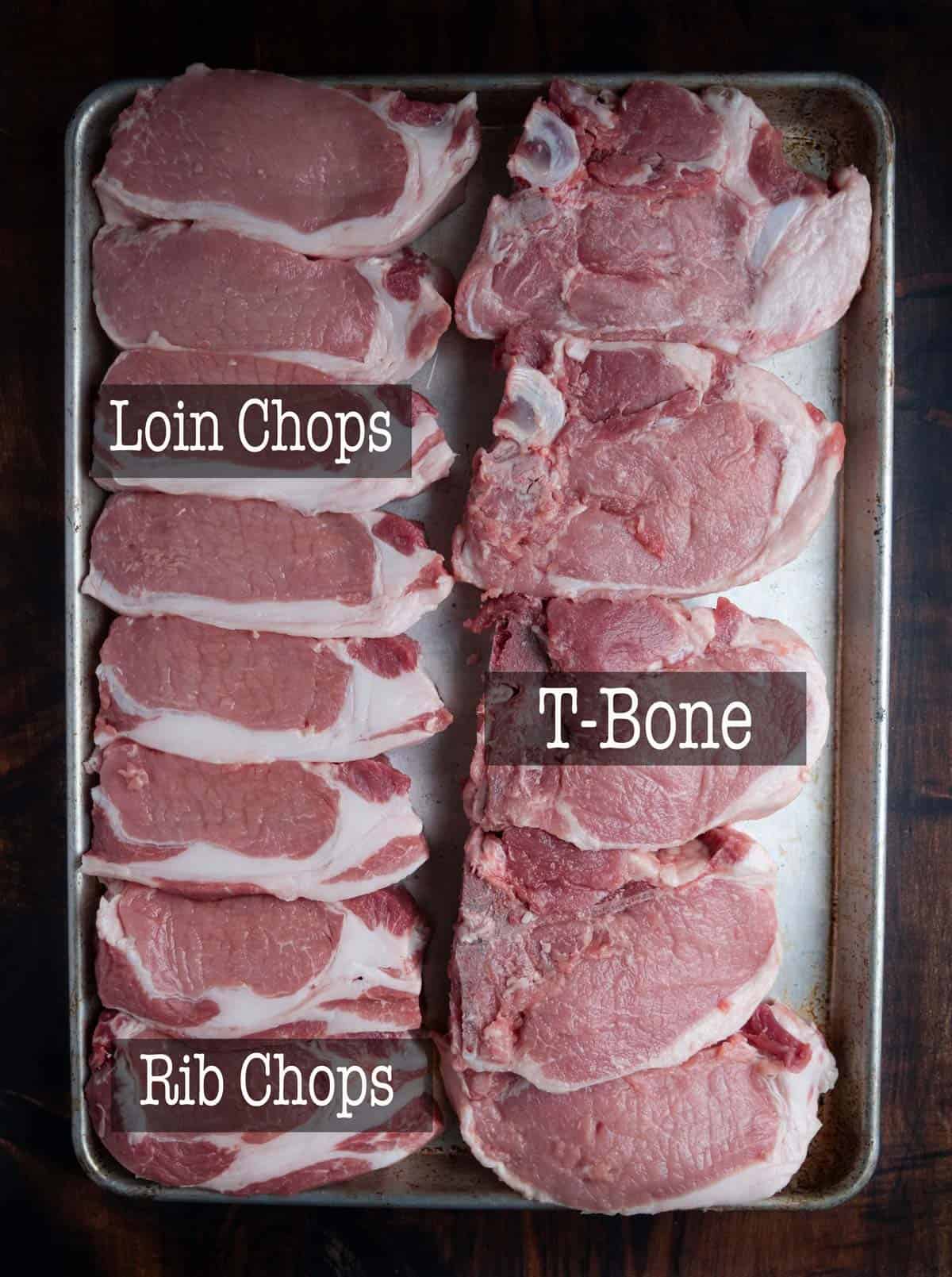
Shoulder Chops
Shoulder Chops, or blade chops are just off the pork shoulder as the back ribs start. They have a lot of marbling. Shoulder chops are great for cubed pork stew meat or grilled hot and fast.
True blade steaks for pork will actually be cut from the pork shoulder versus the loin. These are much larger (and heavier).
Flavor Profile: Rich and great fat ratio. Similar to the steaks that can be cut from pork shoulder they can be slightly chewy. We like to smoke these and then sear them to render more of the fat.
Rib Chop
The rib chop, also known as the center-cut chop, is one of the most popular cuts. It’s taken from the rib section of the pig and features a generous layer of fat along the top. This fat imparts exceptional flavor and moisture to the meat, making it a favorite among grill masters.
This is comparable to the ribeye of steak and is most commonly where you find pork tomahawk steaks.
Flavor Profile: Good marbling and great for grilling hot and fast. You can also order these as thicker cuts or roasts. Rib chops are often what you see as bone-in Frenched roasts.
Loin Chop
Loin chops are cut from the top of the pig’s loin, closer to the spine. They are leaner than rib chops but still offer a tender and succulent eating experience. Loin chops are versatile and can be prepared using various cooking methods, making them a fantastic choice for any occasion.
Flavor Profile: Because loin pork chops are so lean they tend to cook quickly. They are also incredibly tender. You can cook these as thin steaks for a hot and fast sear or go thicker with reverse sear. Because they are lean they cook quickly.
Sirloin Chop and Pork T-Bones
As you get closer to the ham portion of the pig you get dense bone. Along this area, you will find your bone-in sirloin chops and pork t-bones (similar to a t-bone or porterhouse found in beef).
Pork T-Bones have both the loin meat and the pork tenderloin attached.
Flavor Profile: Sirloin chops, especially bone-in are similar to loin chops. The added bone and surrounding fat add a little more richness. These are great if looking for elegant presentation. These are also best if thick cut at 1 1/2 inches thick.
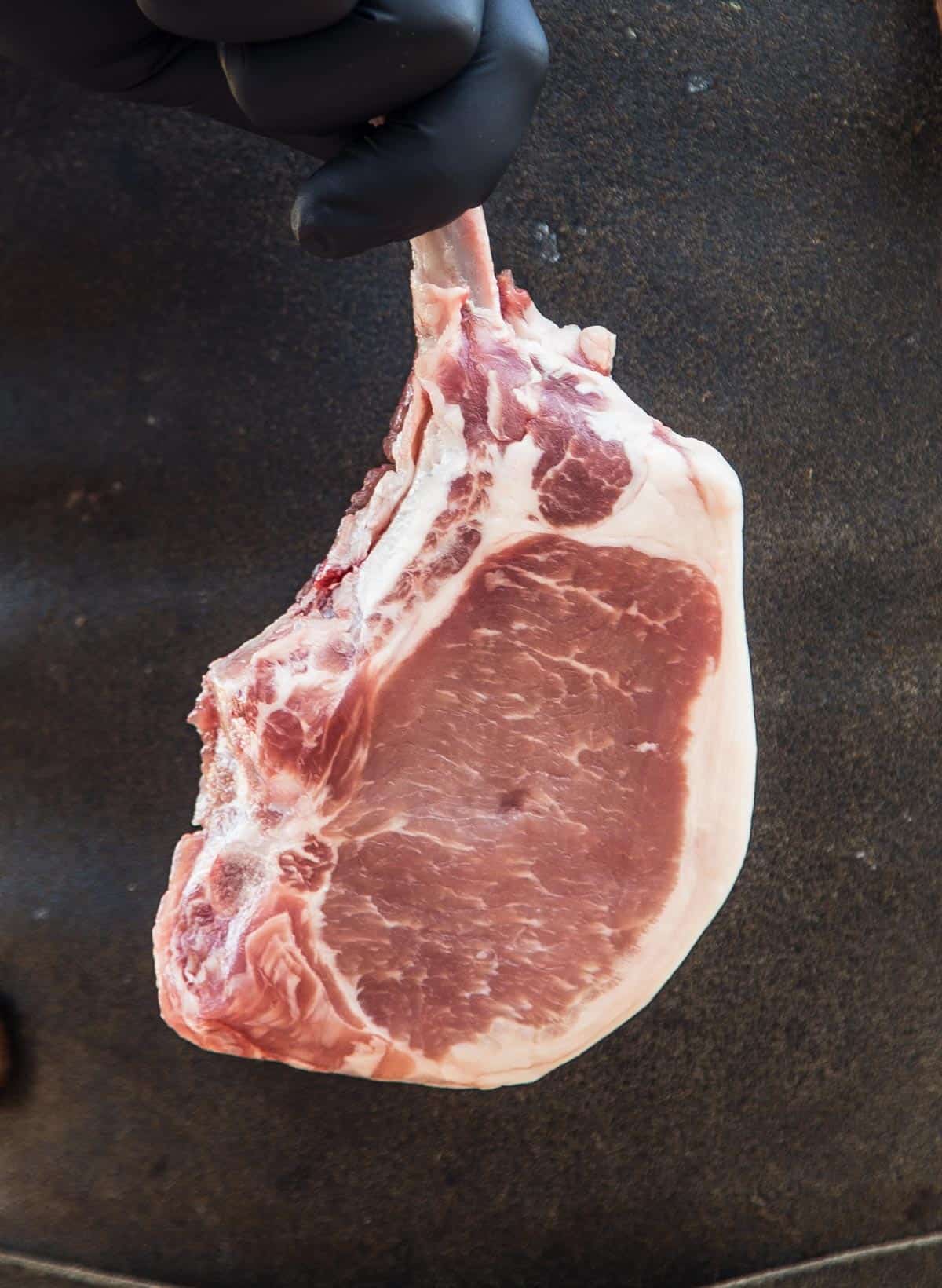
The tenderloin cooks quickly so it’s best to watch these closely as they cook.
Preparing and Cooking Pork Chops
Now that you know about the different cuts of pork chops, let’s explore how to prepare and cook them to perfection.
Brining
Pork has less natural marbling than beef and so a pork brine helps to add both flavor and additional moisture. A simple brine of water, kosher salt, and sugar can add a lot of flavor. You can also get creative with an apple cider brine. We use the following brine ratio for every 4 pounds of meat.
Would you like to save this?
- 1 gallon water
- 1 cup kosher salt
- 1 cup cane sugar
Seasoning and Marinades
To enhance the natural flavors of pork chops, seasoning and marinades are key. Common seasonings include salt, pepper, garlic, (SPG rub) and herbs. Marinades can range from simple olive oil and lemon to more complex flavor profiles like Asian-inspired soy, maple syrup, and ginger.
Grilling Pork Chops
Grilling pork chops is a great method for bringing out their smoky goodness. Preheat your grill, brush the chops with a bit of oil and seasoning, and cook them over medium-high heat. Be sure to watch them closely to prevent overcooking, as pork chops can dry out if cooked for too long.
Move them around the grill if you see flare ups happening.
Reverse Seared Pork Chops
Reverse Searing is our favorite method in which we smoke the pork chops first and then finish them in a hot cast iron pan or on a hot grill. The flavor is infused into the meat, especially the fatty pockets, and makes for one of the most flavorful bites you will have.
Pan-Searing Pork Chops
Pan-searing is a fantastic way to achieve a crispy exterior and a juicy interior. Heat a skillet with a bit of oil, sear on both sides until golden brown, and finish them in an oven preheated to 425 degrees Fahrenheit for even cooking.
Baking Pork Chops
Baking pork chops is simple and the way that many of us grew up with them. Season them, place them on a baking sheet, and bake in a preheated oven at 425 degrees Fahrenheit until they reach the desired internal temperature. This method allows you to infuse the chops with flavors by adding herbs, vegetables, or even a flavorful sauce.
Frequently Asked Questions
Yes, pork chops are pork steaks. Beef steaks have had specific cuts named for decades. Pork has just not marketed those same cuts in the same way. You can generally compare similar pork chops to their beef steak counterparts.
The USDA recommends cooking all pork to an internal temperature of 145 degrees Fahrenheit using an instant-read meat thermometer. We prefer cooking our pork chops to 135 to 140 degrees Fahrenheit and letting carry-over cooking occur and finish them. As pork chops rest they will continue to cook an additional 5 degrees. It’s the best way to avoid overcooking the meat.
Pork chops have a variety of cuts along the entire loin and all of them are great for various cooking techniques. Match the right cut with the type of flavor profile you are looking for.
What to Serve With Pork Chops
Pork chops are incredibly versatile and pair well with various side dishes and accompaniments. Here are some serving ideas:
- Mashed Potatoes: Creamy mashed potatoes complement the richness of pork chops perfectly.
- Grilled Vegetables: Roasted or grilled veggies add a healthy and vibrant touch to your meal.
- Apple Sauce: A classic pairing that brings a touch of sweetness to your savory chops.
- Wine Pairing: Choose medium-bodied red, such as Pinot Noir or Rhone-style blend, or a white like Chardonnay to elevate your dining experience. A crisp semi-dry Riesling is also a fantastic pair for many styles of Pork Chops.
Get Cooking
Pork chops, in all their delicious glory, offer a world of culinary possibilities. Whether you’re a grill enthusiast, a home chef, or just someone who appreciates a hearty and flavorful meal, pork chops are a versatile canvas waiting to be explored. So, next time you’re at the butcher’s counter, don’t hesitate to pick up some succulent pork chops and embark on a flavorful adventure.
Sean Martin is co-author of Fire + Wine cookbook and forthcoming Fire + Wine Pizza cookbook and contributing author to Vindulge. He focuses on product reviews, grilling tips, and recipe ingredients. He is also a chef and manages events for Vindulge.
